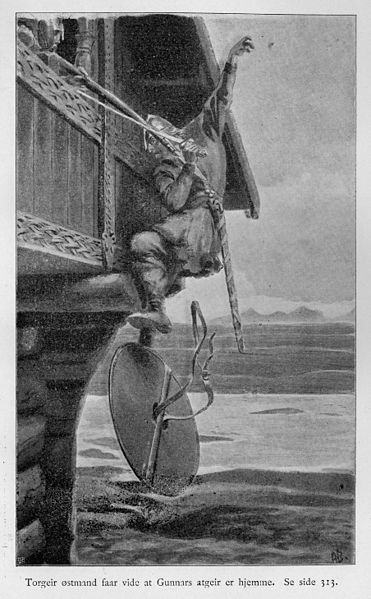Here's my top five:
1) The Prose Edda
 |
| The Poetic Edda (18th c. ms.) |
The Prose Edda is a compilation of several essays by the 13th century Icelandic chieftain, Snorri Sturlasson. Snorri was a Christian (conversion took place ca. 1000), but he was heavily invested in the Skaldic tradition of courtly praise poetry, which required a knowledge of Norse Mythology to understand. He wrote in order to preserve that mythology, (and the list of poetic metaphors that accompanied it.) The result is the first systematic telling of the Norse myths, and one that provides the best and easiest introduction to them today.
2) The Poetic Edda
 |
| Image of (maybe) Odin,
Tjängvide runestone
|
The Poetic or Elder Edda is a collection of mythological and legendary poetry. It was written in medieval Iceland, probably after the conversion, but with an unknown amount of material reaching back into the pagan period. It's a more difficult, and more uneven read than the Prose Edda, and requires a knowledge of Norse mythology to understand. Many of the poemsare world classics and exceptionally moving. The Voluspa tells the story of the world from creation to its destruction and rebirth. The Havamal provides a list of Viking proverbs (some especially pithy and grim) and Odin's magical lore.
3) Beowulf
 |
| The Sutton Hoo helmet |
4) Njal's Saga
 |
| Gunnar's Spear is at Home |
Njal's Saga is one of the Icelandic "Family" Sagas about the founding families of early Iceland, just before and after the conversion. A Saga is a long prose work, like a modern novel. All Icelandic Sagas are terse and tense, radiating a grim sense of irony -- like Hemingway with an axe. Njal's Saga tells of an escalating feud that neither the saintly and shrewd protagonist protagonist, nor his heroic friend Gunnar, can prevent, and which eventually destroys them both. Often seen as a commentary on the failings of the feud system itself, Njal's Saga is the most often read and admired Saga.
5) Egil's Saga
 |
| Egil Skallagrimsson |















